Hey, all you landlubbers, armchair adventurers, and bona fide aquanauts! Have you ever dreamed about swimming with dolphins, exploring ancient shipwrecks, or simply immersing yourself in a world most people only see on Nat Geo? Well, buckle up, because we’re diving deep into the fascinating world of scuba diving! 🌊
From the deepest scuba dive ever recorded to what makes scuba diving in Roatan a Caribbean dream, we’ve curated 30 jaw-dropping fun facts about scuba diving to fuel your oceanic curiosities. And not to worry, we’ve made sure each and every tidbit is as reliable as your trusty diving regulator. So fill your tanks and ready your fins, it’s time to submerge into scuba awesomeness! 🐠
1. The Deepest Scuba Dive Ever Recorded
Fancy going deep? Well, you might have some competition with Ahmed Gabr, an Egyptian diver who holds the Guinness World Record for the deepest scuba dive. On September 18, 2014, he plunged down to an astonishing 1,090 feet in the Red Sea. To put that into perspective, that’s taller than the Eiffel Tower!
Sure, this kind of record is for the elite, but it’s mind-blowing to know just how far you can go with enough training, determination, and, oh, a ton of specialized equipment.

Image source: virtualchampionship.eu
2. The Pioneers of Modern Scuba Diving
Before you can blow bubbles underwater like Nemo, some folks had to pave the way. Jacques Cousteau and Émile Gagnan are often dubbed the fathers of modern scuba diving. In 1943, they unveiled the Aqua-Lung, an open-circuit, self-contained underwater breathing apparatus—talk about a game-changer!
Before this invention, diving was a cumbersome affair. These pioneers made it possible for us mere mortals to explore the underwater world with relative ease. Hats off, gentlemen!
3. The Origin of the Word ‘Scuba’
Ever wondered why it’s called “scuba” and not something more aquatic like ‘Mermaid-Maneuver’? SCUBA is actually an acronym that stands for “Self-Contained Underwater Breathing Apparatus”. Yep, this handy term was coined in the 1930s and borrowed from the U.S. military jargon.
Although the acronym sounds technical, it’s the golden ticket to an underwater world filled with more treasures than a pirate’s chest. So the next time you suit up, remember that you’re not just diving—you’re SCUBA diving!
4. Scuba Diving isn’t Just for the Ocean
Who said you need salty water and crashing waves for a diving adventure? Freshwater diving is a thing too, folks! Lakes, rivers, and even quarries can offer exciting dive sites. Ever heard of the Great Lakes? They’re not called “great” just for their size; they’re home to some historical shipwrecks dating back centuries.
So, the next time you’re landlocked and feeling down, just remember: there’s probably a freshwater dive site closer than you think!
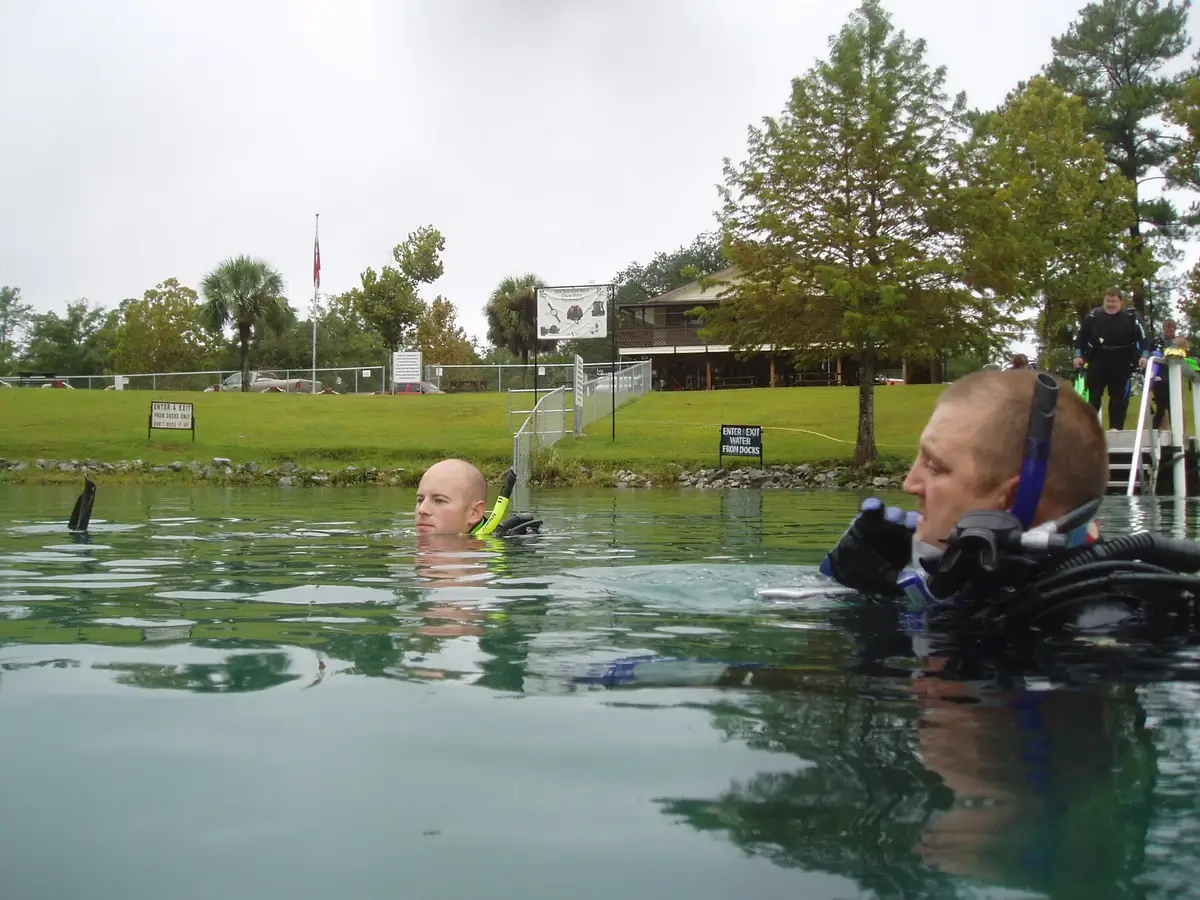
Greg Grimes / Flickr
5. Sign Language Underwater: Scuba Hand Signals
Communication underwater isn’t as easy as shouting, “Hey, look at that cool fish!” to your buddy. That’s where scuba hand signals come into play. Diving instructors often start beginner courses by teaching these essential signs.
The “OK” sign is universal, but there are also signals for ascending, descending, and emergency situations. Understanding hand signals is not just one of the many interesting facts about diving; it’s vital for safety.
6. How Much Does Your Buoyancy Change?
Ever felt heavier or lighter while diving and thought it’s all in your head? Think again! Depending on your depth, your buoyancy can actually change. This is due to water pressure affecting the buoyancy control devices (BCDs) divers wear.
When diving, adjusting your buoyancy is crucial for both safety and comfort. So, the next time you’re scuba diving in Santa Cruz or scuba diving in Roatan, remember that you’re not imagining things. The ocean is just playing with your sense of weight!

Pia B / Pexels
7. The Physics Behind Equalization
Ever felt that irritating ear pressure while going deeper underwater? Welcome to the realm of equalization. As you descend, water pressure increases, causing air spaces in your body to compress. The trick to comfort? Equalizing the pressure in your ears with the surrounding water pressure.
The most commonly used method is the Valsalva maneuver. Hold your nose, and gently exhale against closed nostrils. Voila! Physics isn’t just for chalkboards; it’s your underwater buddy, too.
8. How a Regulator Works
The regulator: it’s the lifeline for any scuba diver. But how does this marvel of engineering work? In simple terms, it converts the high-pressure air in your tank to ambient pressure. This lets you breathe easily while exploring the depths.
The first stage attaches to your tank, reducing tank pressure. The second stage delivers it to your mouth at ambient pressure. It’s the unsung hero of your diving escapade, and it deserves some love.
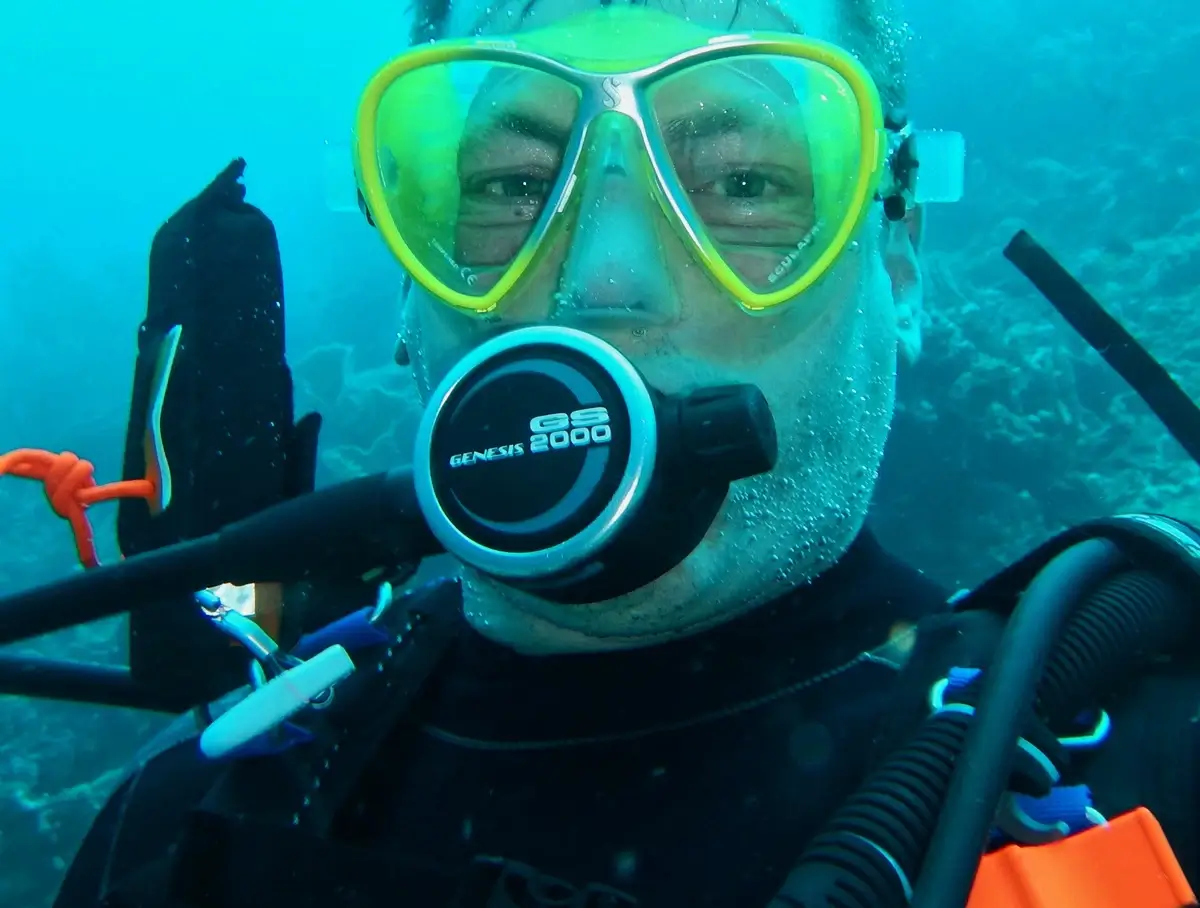
Tom Fisk / Pexels
9. The Mystery of Nitrogen Narcosis
Ah, the rapture of the deep, also known as nitrogen narcosis. Occurring usually beyond 100 feet, it can make divers feel disoriented or euphoric. Although it isn’t as dangerous as the bends, it’s still a mysterious phenomenon.
Some symptoms include poor decision-making and a feeling of overconfidence. Why does it happen? The theories are plenty, but the consensus is limited. It’s a hot topic in the world of diving that demands respect and caution.
10. Why Divers Roll Backwards Off Boats
It’s iconic and it’s functional—the backward roll entry from boats. But why do divers do it? Simple: it keeps your mask and regulator in place. Also, it’s much easier to take the plunge while keeping an eye on your entry point.
The backward roll helps divers enter water smoothly while minimizing risks. It’s more than a Hollywood move; it’s a functional and safe way to start your underwater adventure.
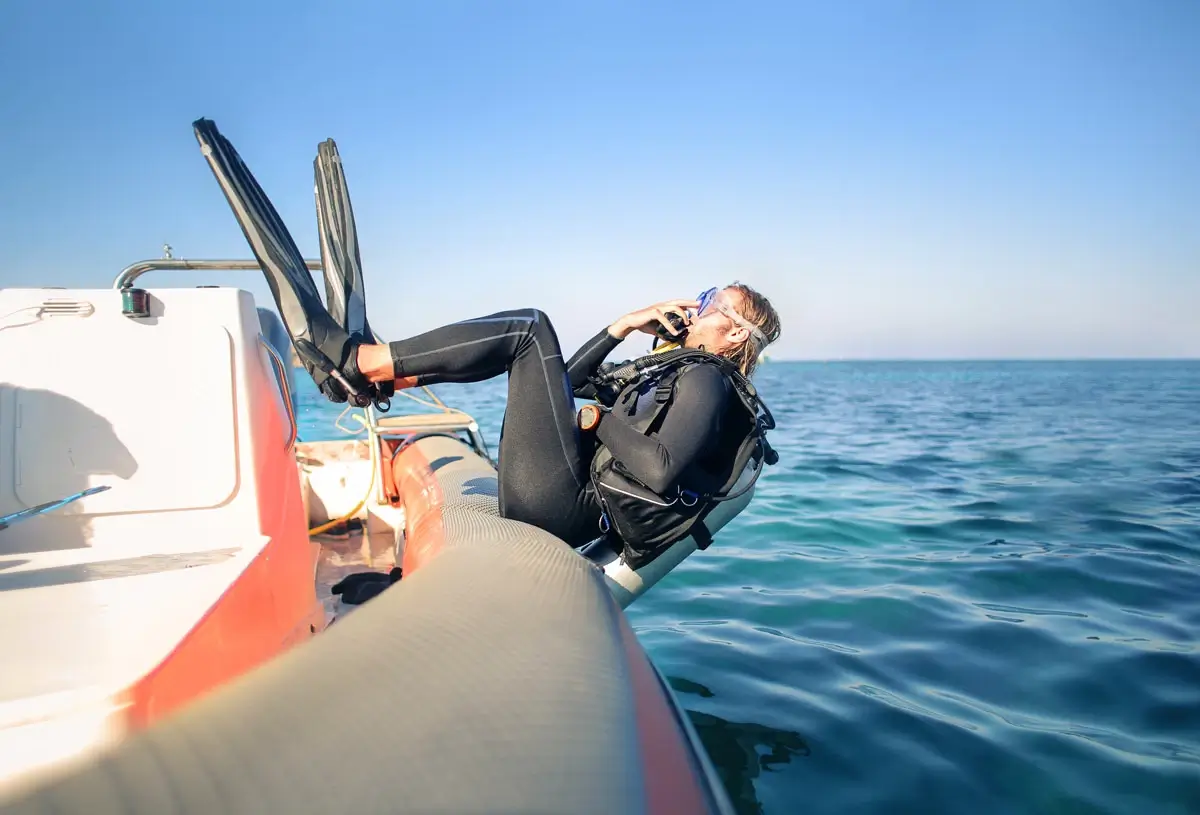
Image source: sportdiver.com
11. The Importance of Dive Tables
Never underestimate the power of good old-fashioned planning, especially when scuba diving. Dive tables are crucial for avoiding decompression sickness. Provided by diving agencies like PADI, they guide you on how long you can dive and at what depth, without needing decompression stops.
Think of it as your underwater GPS, keeping you safe from potential pitfalls. It’s an essential tool for any diver looking to keep their underwater explorations free from hiccups.
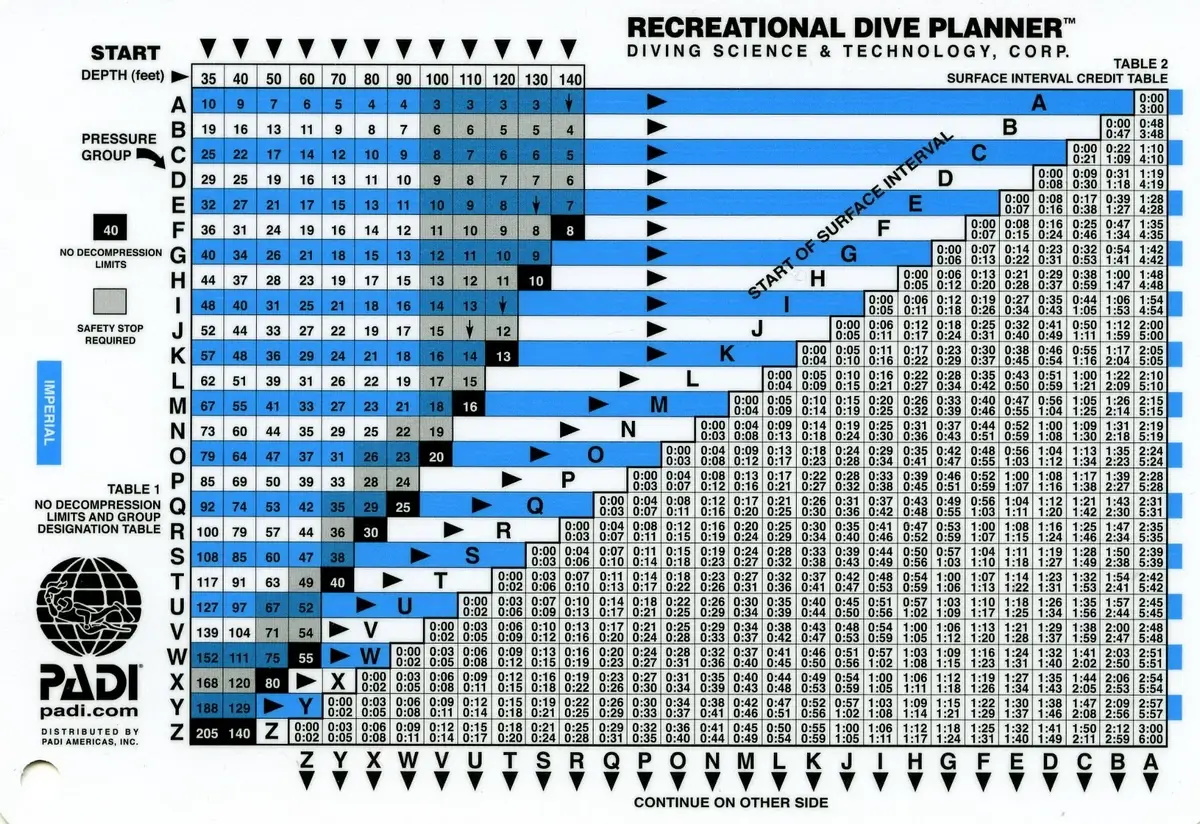
Image source: Pinterest
12. The Diverse Range of Scuba Diving Equipment
Dive into the world of scuba, and you’ll soon realize you need more gear than a superhero. There’s a stunning array of scuba diving equipment for different types of dives. Your basic ensemble includes a mask, snorkel, fins, wetsuit, buoyancy control device (BCD), and of course, the regulator.
But hold on, you may also run into dive computers, underwater cameras, and specialized lighting. Each piece has its purpose, from safety to enhancing your underwater experience. It’s like the Swiss Army knife of water sports!
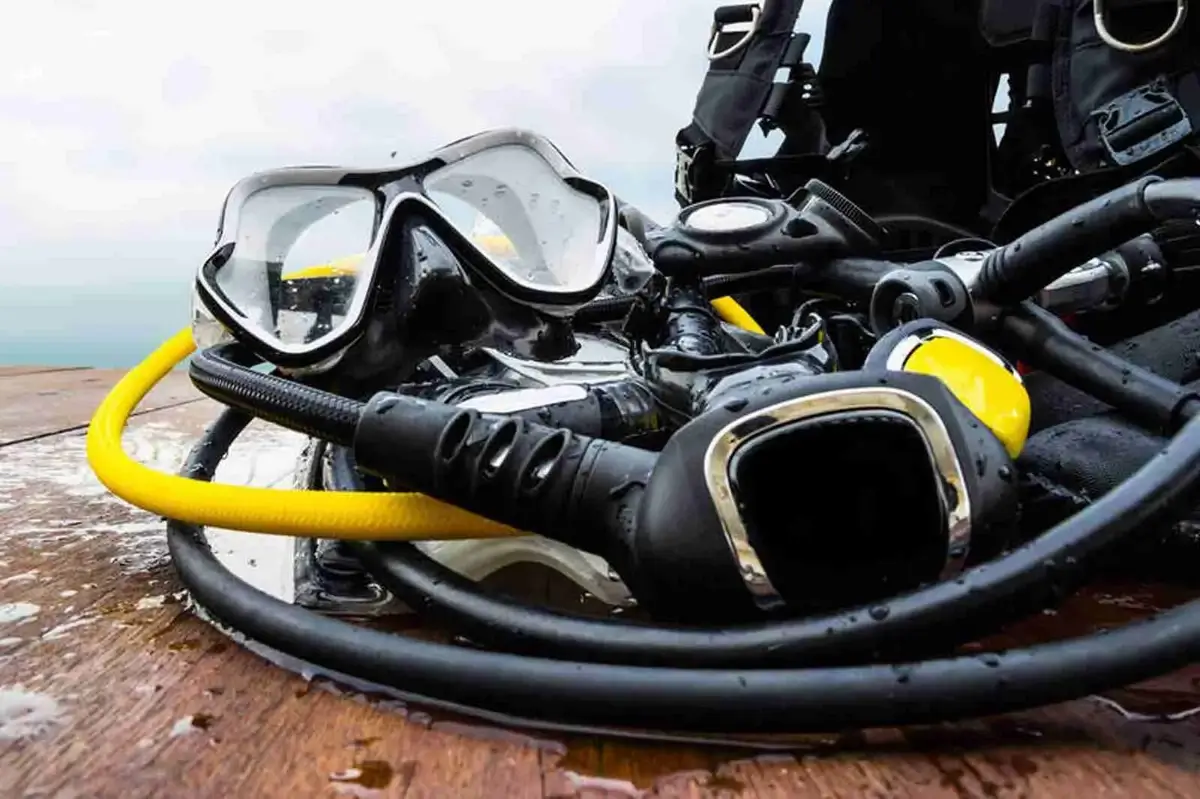
Image source: seafari.co.th
13. Marine Animals That Divers Often Encounter and Should Know About
Did you know that certain marine animals are commonly encountered during dives and divers should be prepped about them? Yup, it’s one of those danger facts about scuba diving that can also make your underwater experience way cooler. While you might wish for dolphins and turtles, you could also bump into less cuddly neighbors like the lionfish or the stonefish.
The lionfish, for instance, is an invasive species in the Caribbean, and its spines contain venom. Conversely, the stonefish is well-camouflaged and stepping on one can be extremely painful. Knowing which marine animals to watch out for is not just a trivia tidbit; it’s a safety imperative!
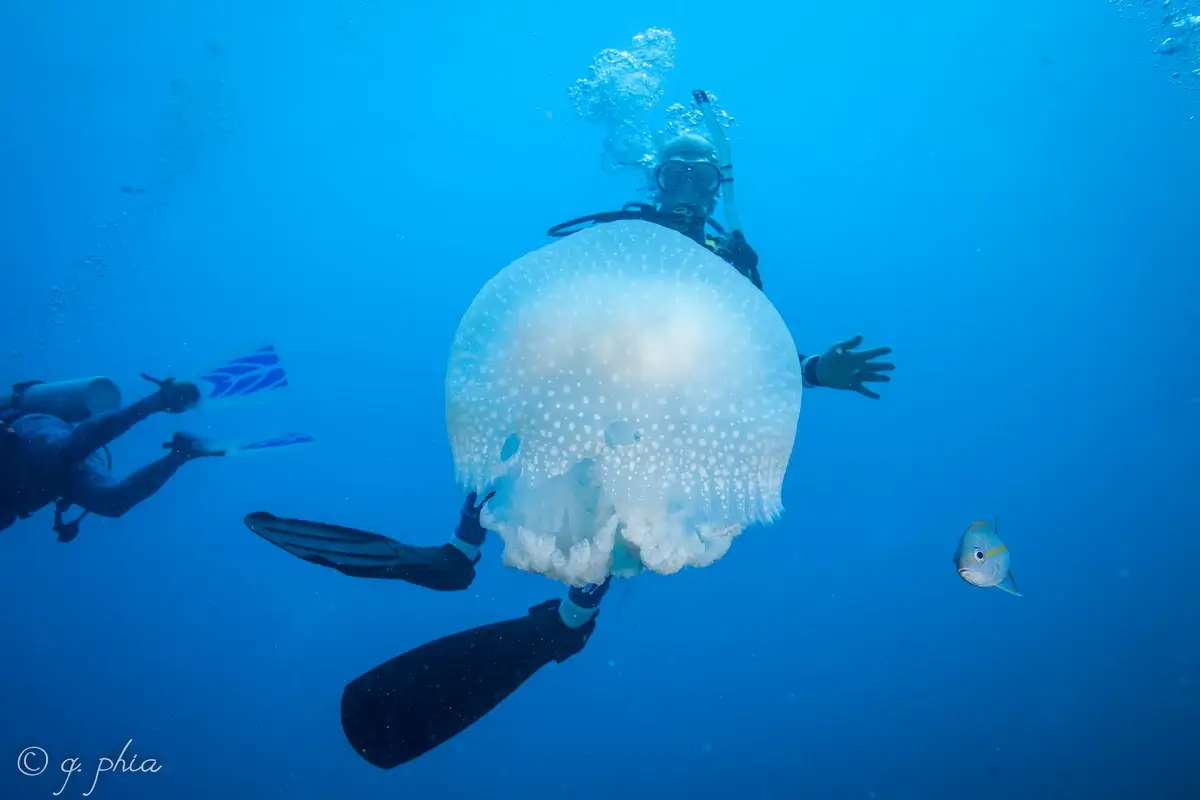
q phia / Flickr
14. Do Fins Really Make You Swim Faster?
Ah, fins—those floppy appendages that make you look like Aquaman’s less stylish cousin. Do they actually make you swim faster? In a nutshell, yes! Fins increase the surface area of your feet, providing more propulsion with less effort. It’s not so much about speed as it is about efficiency.
So, if you’re wondering how fins contribute to your underwater odyssey, just remember: they’re your personal underwater turbo boosters.
15. How Dive Computers Revolutionized Diving
Dive tables? Pfft, that’s so last century! Enter the dive computer, the little wrist-worn miracle that’s revolutionized diving. Before these gadgets, divers relied on manual calculations and dive tables to figure out how long they could safely stay underwater. One wrong move, and you’re getting to know the bends a bit too intimately.
Dive computers have brought real-time, continuous data right to your wrist, making it one of the greatest advancements in scuba technology. These bad boys provide vital information like depth, dive time, and no-decompression limits, all while you’re underwater. Talk about an upgrade!
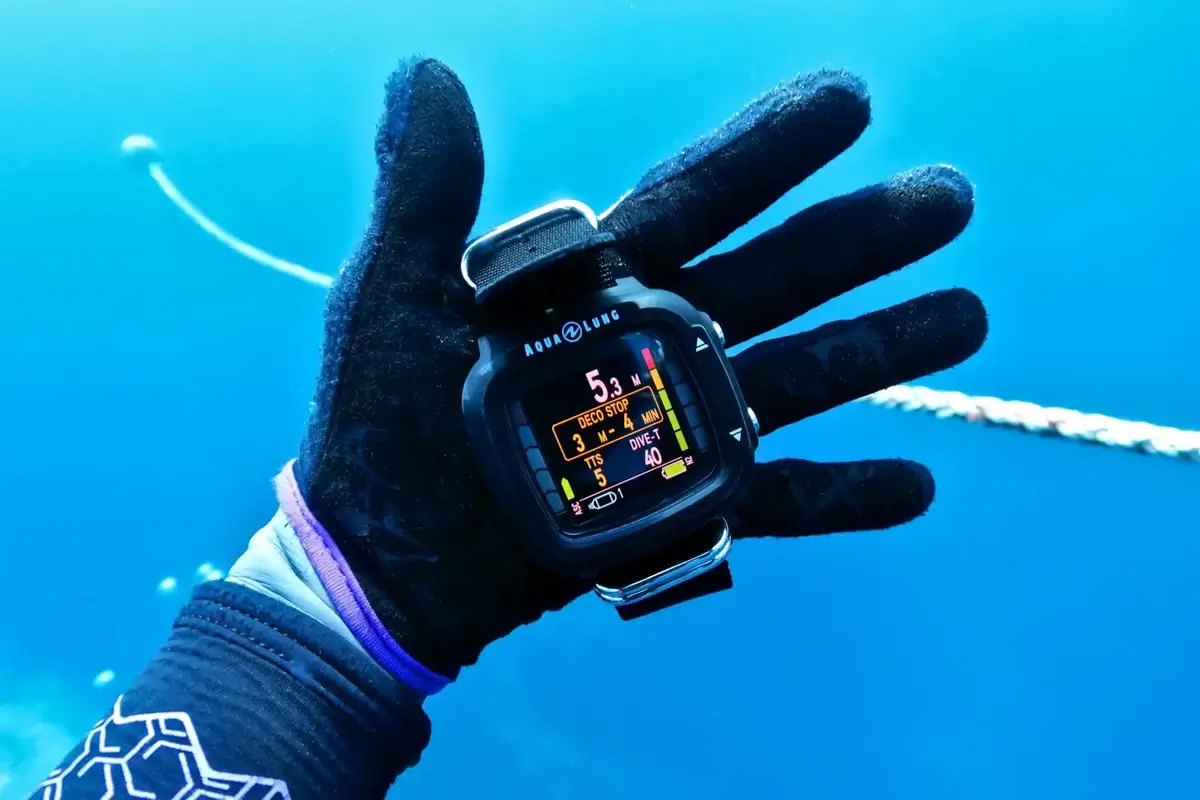
Image source: worldadventuredivers.com
16. The Role of the Diving Instructor
You might think you can wing it underwater—after all, you’ve mastered the dog paddle in your local pool, right? Wrong. Diving instructors are the unsung heroes of the scuba world. These certified professionals teach you everything from the basics of buoyancy to the complexities of decompression.
Moreover, instructors provide invaluable feedback, correct your form, and guide you through any challenges or hiccups. Their role is to make sure you’re a safe and competent diver. Because let’s face it, YouTube tutorials can only get you so far.
17. Cave Diving: An Entirely Different Beast
If regular scuba diving is like hiking, then cave diving is like scaling Everest blindfolded. Well, not really, but it’s a lot more complicated and falls into the realm of dangerous scuba diving facts. Cave diving requires specialized training, gear, and a bit more guts than open-water diving.
Navigating through dark, narrow passages isn’t everyone’s cup of tea. In fact, the overhead environment in caves means there’s only one way out, so the margin for error is extremely thin. No wonder it’s often considered the ‘extreme sport’ of the diving world.
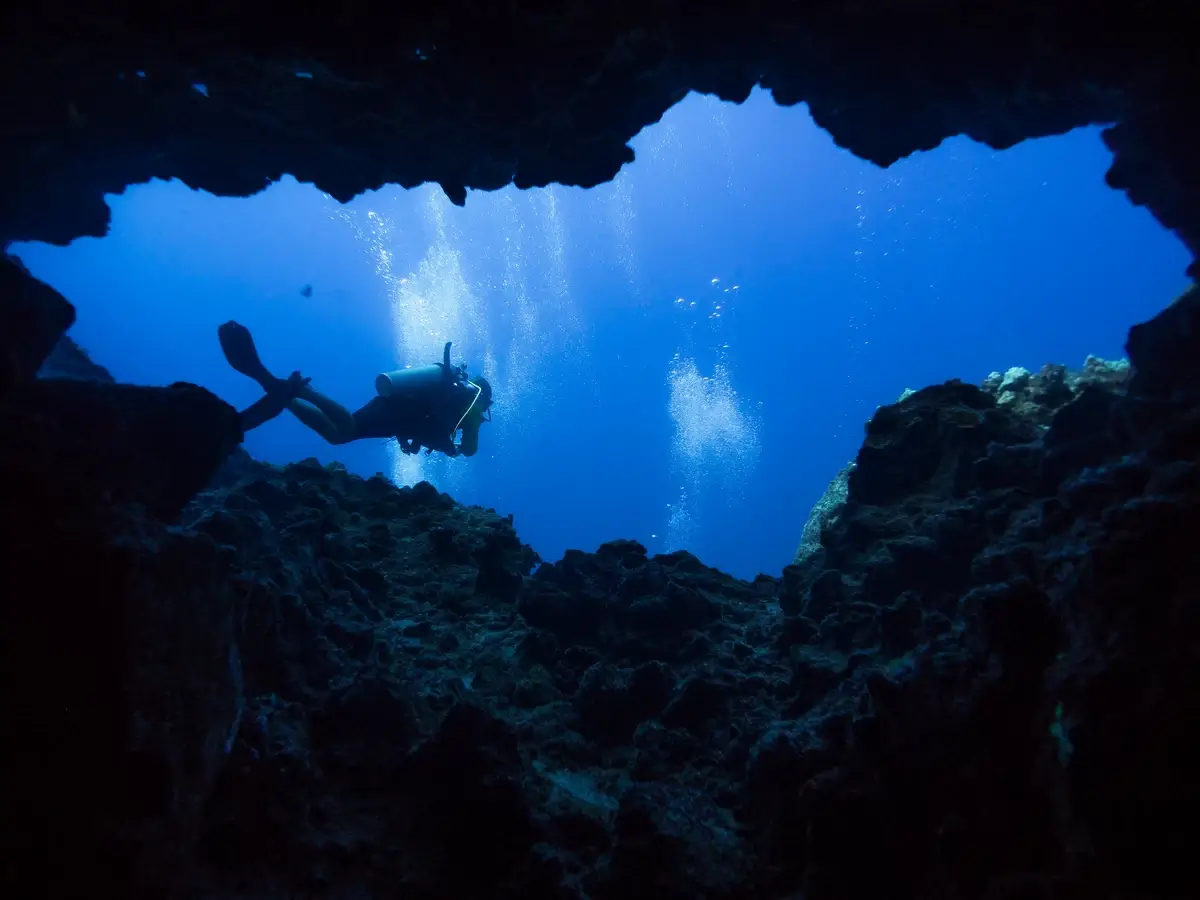
Mike Cialowicz / Flickr
18. Decompression Sickness: The Bends
“Getting bent” isn’t about throwing a tantrum; in the scuba world, it refers to decompression sickness, also known as “the bends.” This happens when divers ascend too quickly, causing nitrogen bubbles to form in the bloodstream. Yeah, not fun.
It’s one of those danger facts about scuba diving that you absolutely need to know. Symptoms can range from joint pain to paralysis and, in severe cases, death. Avoiding “the bends” is one of the first things any good diving instructor will drill into you.
19. Night Diving: A Different World
“Hey, you! Ever wondered what happens underwater when the sun calls it a day? Night diving’s got you covered. This isn’t just regular diving with the lights out; it’s an entirely different experience. Marine life that shies away during the day comes out to play, and your flashlight reveals colors that sunlight can’t show you. It’s like the ocean throws on its disco lights just for you.
Night diving falls under those cool facts about scuba diving because it’s not just about ticking off a box. It’s about seeing the underwater world through a whole new lens, or should we say, a whole new light.
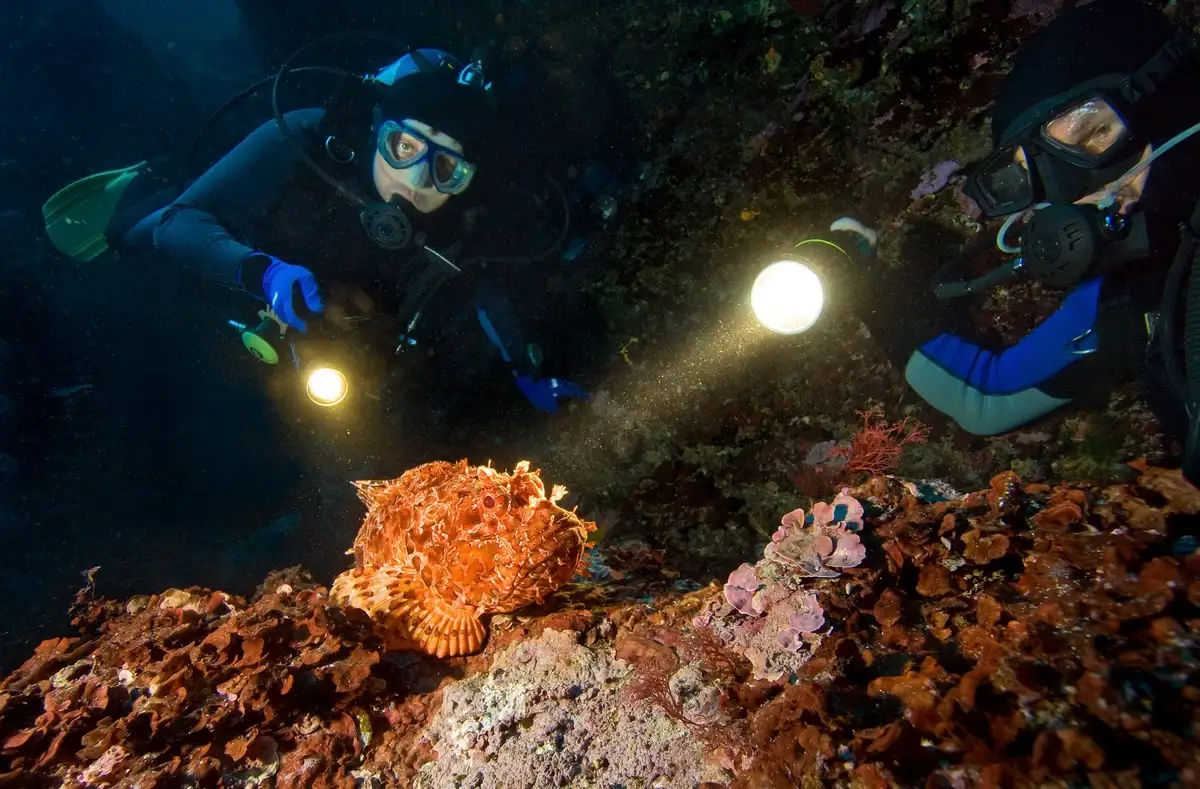
Image source: aqaba-diving.com
20. Diving With a Camera: What You Should Know
Snap! Did you get that photo of the parrotfish? No? Perhaps you should consider some crucial facts about diving with a camera. First up, cameras and water don’t naturally mix—waterproof housing is a must. Second, you can’t just aim and shoot; your buoyancy can go bonkers if you’re not careful, sending you bumping into coral or floating up.
Fact three: proper white balance settings are crucial, as water absorbs different wavelengths of light. That’s how you capture those vivid colors down there, instead of a blanket of blue. Finally, not all cameras are good for diving—your everyday point-and-shoot won’t cut it. Professionals often use DSLRs with specialized underwater settings.
In a nutshell, diving with a camera involves multitasking, keeping safety in mind, and knowing your gear. You need more than just an Instagram account to capture the ocean’s magic. But hey, that’s why you’ve got diving instructors to guide you, right?
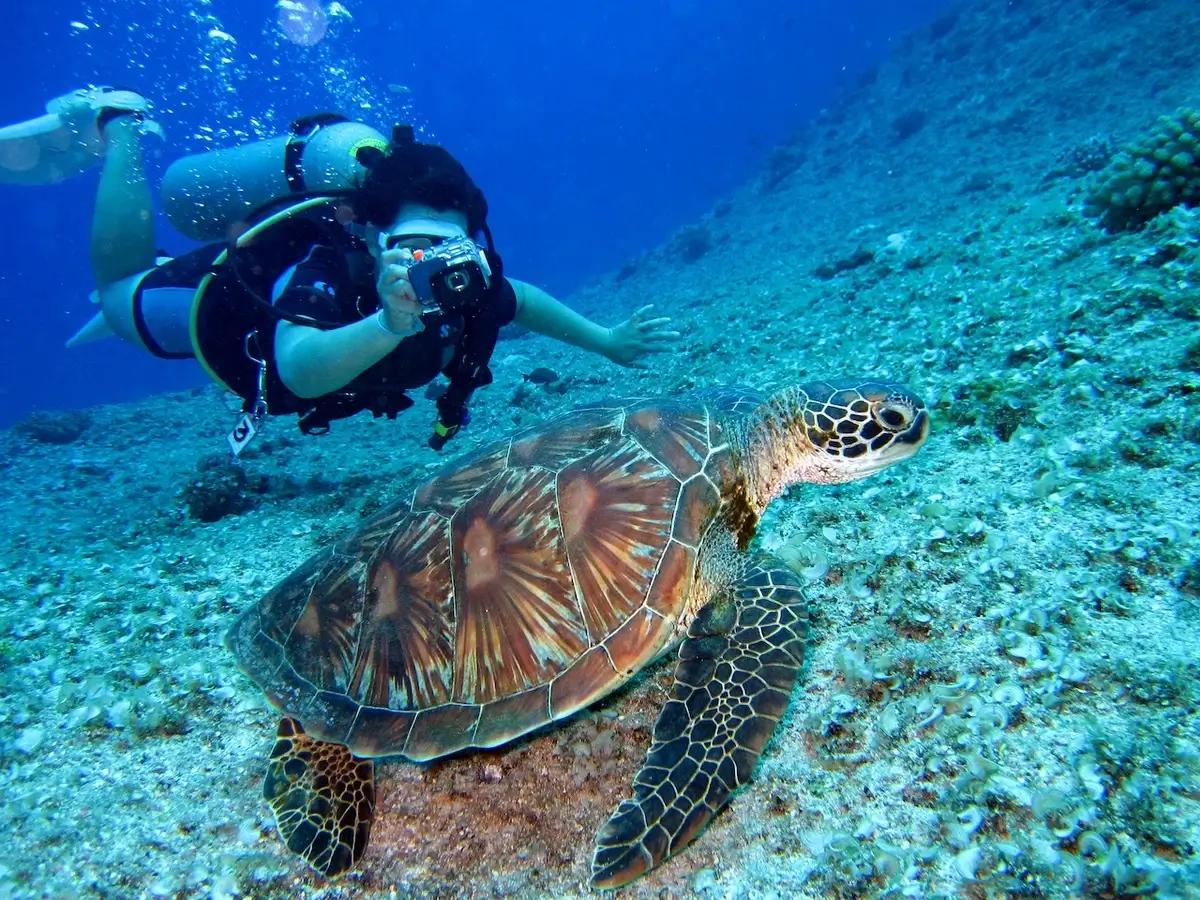
Richard Segal / Pexels
21. Why Divers Use Dive Flags
The red and white dive flag isn’t just a cute nautical accessory; it’s crucial for safety. This flag lets boaters know that divers are in the water and to steer clear. Trust me, you don’t want to become an accidental human speed bump for a jet ski.
This is one of those scuba diving facts that’s also a legal requirement in many places. So, when you see that flag go up, it’s not a pirate invasion; it’s your ticket to a safer dive.
22. The Importance of the Buddy System
Two’s company, three’s a crowd, but underwater, another diver is always welcome. The buddy system is a key safety feature of scuba diving, and it’s not just about having someone to high-five after seeing a cool fish. Your buddy checks your gear, helps in emergencies, and is generally your underwater lifeline.
It’s a straightforward yet vital component that even the most advanced divers adhere to. No diver is an island, or in this case, a coral reef.
23. Scuba Diving and Its Effects on the Body
Becoming Aquaman is fun, but did you know that diving actually affects your body in several ways? First, pressure differences can affect your ears and sinuses—hence, the importance of equalizing. Second, your body uses more energy underwater due to colder temperatures and resistance from water, meaning you burn more calories than you’d think.
Now, let’s talk nitrogen. This little element becomes more soluble in your blood under pressure, leading to that tricky issue called “The Bends” if you ascend too fast. Oh, and let’s not forget—you might also experience a state of euphoria known as Nitrogen Narcosis. It’s one of those weird scuba diving facts that sounds cool but can be risky.
24. Cold-Water Diving vs. Warm-Water Diving
Imagine you’re a Goldilocks of the sea, trying to find water that’s “just right.” Well, diving conditions aren’t one-size-fits-all. Cold-water diving often requires a dry suit and offers distinct marine life like kelp forests and seals. Meanwhile, warm-water diving usually calls for a simple wetsuit and treats you to colorful coral reefs.
Your gear, buoyancy, and even the time you can spend underwater can vary based on water temperature. Also, danger facts about scuba diving tell us that cold water can lead to hypothermia if you’re not properly insulated.
25. The Connection Between Surfing and Scuba Diving
Surf’s up, dude! But did you know that surfing and scuba diving are like cousins? Sure, one’s about riding the waves and the other is about exploring beneath them, but they share similarities. Both sports require strong swimming skills, a good understanding of currents, and a mutual respect for the ocean.
Plus, divers and surfers often visit the same hotspots. So, if you’re into surfing, consider adding scuba diving to your aquatic resume. They might look different, but they’re part of the same oceanic family.
26. Technical Diving: What Sets It Apart
So you’ve been diving, but have you been technical diving? Think of it as the PhD level of diving. Unlike recreational diving, tech diving involves multiple gas mixes, specialized equipment, and often, going way beyond the 40-meter limit set for recreational dives.
It’s not just for kicks; technical divers often engage in wreck penetration, cave exploration, and deep-sea research. This goes beyond interesting facts and into the realm of, “Whoa, you do WHAT down there?”

Image source: thescubanews.com
27. The Influence of Scuba Diving on Scientific Research
Ever thought you could help save the planet while having a splashin’ good time? Well, scuba diving isn’t just for selfies with starfish; it plays a crucial role in scientific research. From coral reef conservation to monitoring fish populations and even searching for sunken artifacts—diving serves the sciences in a myriad of ways.
Divers help collect crucial data that influences marine biology, oceanography, and even climatology. In some ways, every diver is a potential citizen scientist. So, while diving, you’re not just exploring; you’re also contributing to human knowledge. Call it scientific facts about scuba diving if you will!
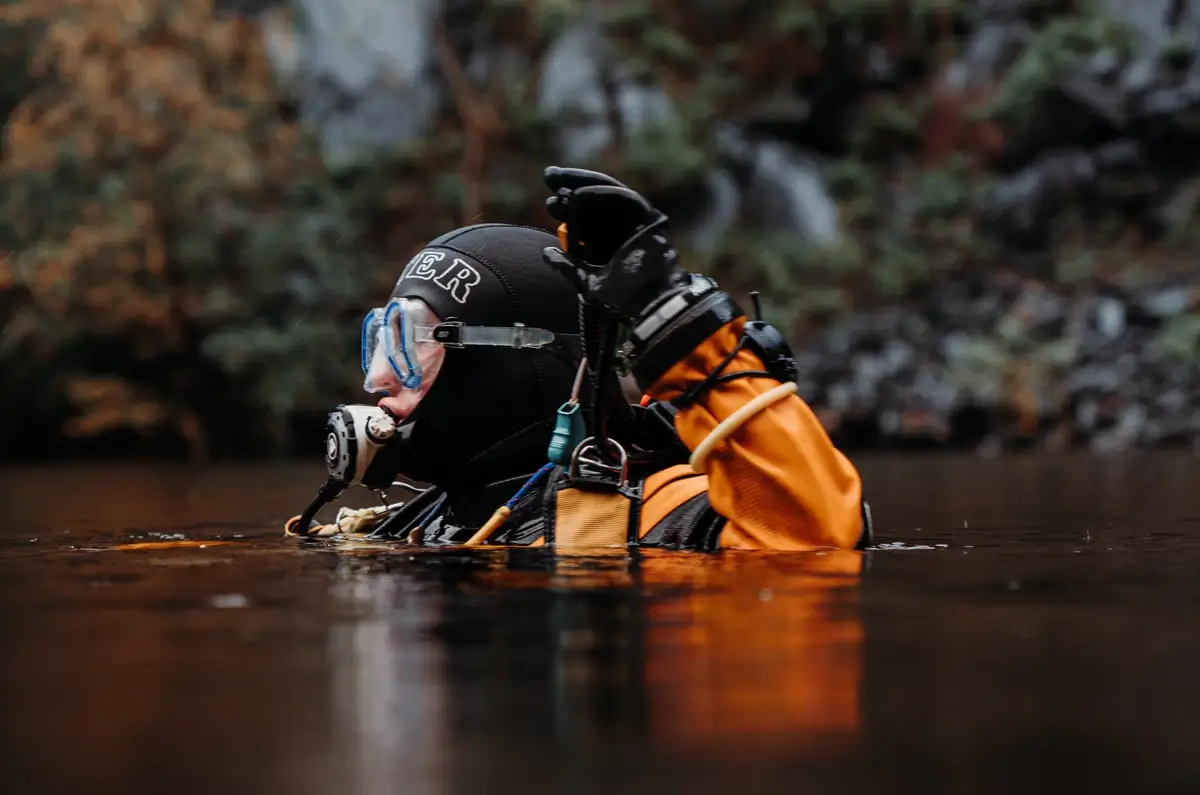
Eriks Abzinovs / Pexels
28. Scuba Diving in Pop Culture
“Under the sea, darling, it’s better down where it’s wetter!” Scuba diving isn’t just a hobby; it’s a cultural icon. From movies like ‘The Abyss’ and ‘Finding Nemo’ to countless TV shows featuring intrepid underwater adventurers—diving is a part of our collective imagination.
In video games like ‘Subnautica,’ players can virtually explore the ocean’s depths, reinforcing the public’s fascination with the world beneath the waves. Scuba diving has even influenced fashion with dive watches and nautical themes. So yes, diving is cool, and pop culture agrees!
29. The Future of Scuba Diving: Trends and Innovations
Who needs a crystal ball when the future of scuba diving is already looking as bright as a bioluminescent jellyfish? First off, diving tech is getting a facelift. Dive computers are getting smarter, dive gear is becoming more sustainable, and rebreathers are becoming more accessible for recreational divers.
Virtual Reality is also dipping its toes in the diving world, offering simulated dives for training or just for fun. And let’s not forget the growing trend of citizen science trips, where divers get to contribute to scientific research (talk about a twofer!). So, yes, the future of diving is not just bright; it’s downright radiant.
30. The Rising Trend of Adaptive Scuba Diving
“Who says you can’t?” is the mantra of adaptive scuba diving—a rapidly growing niche that makes the underwater world accessible to individuals with physical and cognitive disabilities. Instructors specialized in adaptive techniques are training divers who might be dealing with challenges like mobility issues, visual or hearing impairments, and even PTSD. It’s all about breaking barriers, both physical and psychological.
Organizations like Disabled Divers International and Diveheart are spearheading this movement, offering certified courses for would-be adaptive divers. This isn’t just a fad; it’s an incredibly inclusive expansion of the diving community. It embodies the principle that the ocean is for everyone, and in doing so, enriches the tapestry of divers around the globe.

Image source: scubacat-idc.com
FAQ
What are 10 interesting facts about scuba diving?
- Jacques of All Trades: Did you know that scuba diving would be nothing without Jacques Cousteau? This dude not only co-invented the Aqua-Lung, but he also made scuba diving popular with his films and documentaries. Seriously, if scuba diving had a hall of fame, Cousteau would have his own wing.
- Beware of the Bends! Ah, “the bends” — not just a cool Radiohead album, but a serious diving issue. It’s the common name for decompression sickness. If you ascend too quickly, nitrogen bubbles can form in your blood. So, chill out and ascend slowly, like you’re playing a game of underwater slow-mo!
- Nemo’s Not the Only Star: Underwater is a world of vibrant colors and awesome critters. From coral gardens to spooky shipwrecks, you can explore a bunch of different environments. Ever heard of muck diving? It’s like the thrift shop of scuba diving. You’ll find the weirdest and most wonderful critters hiding in the “muck.”
- Talk Like a Fish: Well, not literally. But divers do have their own sign language because regular talking is off the table when you’ve got a regulator in your mouth. Imagine using hand signals to point out a camouflaged octopus or a lurking shark. Yeah, it’s as cool as it sounds!
- Weightlessness Without Leaving Earth: Forget booking a ticket to space! Scuba diving gives you the feeling of weightlessness as you float and glide through the water. It’s like being an astronaut, but with fish instead of stars. Plus, no need for freeze-dried ice cream.
- The Deepest Dive: Ever wondered how deep you can go? Well, the recreational limit is about 130 feet. But if you want to go full-on Aquaman, you can get into technical diving, where dives can exceed 330 feet. Just remember: with greater depth comes greater responsibility.
- Breathing Underwater is Surreal: The first breath you take underwater is magical, nerve-wracking, and just plain weird all at the same time. It’s like reverse-drowning, and it takes a moment to wrap your head around it. Once you do, it’s hard not to feel like a total badass.
- Dive Into History: Ever wanted to be a treasure hunter or an archaeologist? Well, scuba diving lets you explore sunken ships, submerged cities, and lost artifacts. It’s like Indiana Jones, but underwater and with fewer Nazis.
- Night Dives are Nature’s Raves: Think diving is cool? Try it at night! The ocean is a different world when the sun sets, with nocturnal critters coming out and some corals even glowing in the dark. It’s like nature’s own discotheque, no cover charge required.
- Worldwide Waterworld: The best thing? You can dive almost anywhere there’s water! From Iceland’s cold-water fissures to Indonesia’s tropical paradise, there’s a dive spot for everyone. And let’s face it, it’s the ultimate travel excuse: “Honey, we HAVE to go to the Maldives; I need to log more dive hours!”
Is scuba diving a fun hobby?
Fun is an understatement. It’s like you’re transported to a different world, one where you can fly—err, float—see strange and wonderful creatures, and forget about your email notifications. If you love adventure and a bit of adrenaline, scuba diving is a ticket to a whole new playground.
Why is it called scuba diving?
“SCUBA” stands for “Self-Contained Underwater Breathing Apparatus,” which is a mouthful. Thankfully, we’ve got acronyms. So instead of saying, “Hey, want to go Self-Contained Underwater Breathing Apparatus diving this weekend?” you can just say, “Wanna go scuba?” You’re welcome.
What is beautiful about scuba diving?
Where do I even start? The colors of the coral reefs, the dance of light on the ocean floor, the weird and wonderful creatures that you’d swear were from another planet… It’s a front-row seat to a world most people only see in documentaries. Oh, and let’s not forget the sheer tranquility you feel down there; it’s like an underwater meditation session.
How deep is most scuba diving?
For recreational diving, it’s usually between 60 to 130 feet. It’s the sweet spot where you get to see a lot of marine life and cool underwater features without having to worry too much about complicated decompression stops and other technical stuff.
What is the hardest thing about diving?
For some, it’s overcoming the initial fear or discomfort of being underwater. For others, it’s mastering buoyancy control, so you’re not flailing around like a wounded fish. Oh, and if you have to sneeze underwater, good luck. It’s tricky!
Who invented scuba diving?
The credit mainly goes to Jacques-Yves Cousteau and Emile Gagnan. These French geniuses co-invented the Aqua-Lung, the first open-circuit scuba system that let divers explore without being tethered to the surface. Cousteau is basically the Dumbledore of diving.
What are the benefits of scuba diving?
Besides bragging rights and killer Instagram photos? It’s great exercise, it improves your breathing technique, and it’s a fantastic stress-reliever. Plus, it’s a unique way to connect with nature and become an advocate for ocean conservation. Yep, you get to be adventurous and environmentally conscious at the same time.
What is the most important thing in scuba diving?
Safety, safety, safety! Always check your gear, dive within your limits, and listen to your instructor or dive master. The ocean’s not going anywhere, so take your time and do things right. The point is to have fun, but let’s keep it safe, folks.
How healthy is scuba diving?
Pretty darn healthy, if you ask me. It’s good for your heart, lungs, and muscles. Plus, being underwater is incredibly calming, so it’s great for mental health, too. But remember, certain medical conditions and medications can be a no-go for diving, so always consult with a healthcare professional beforehand.





